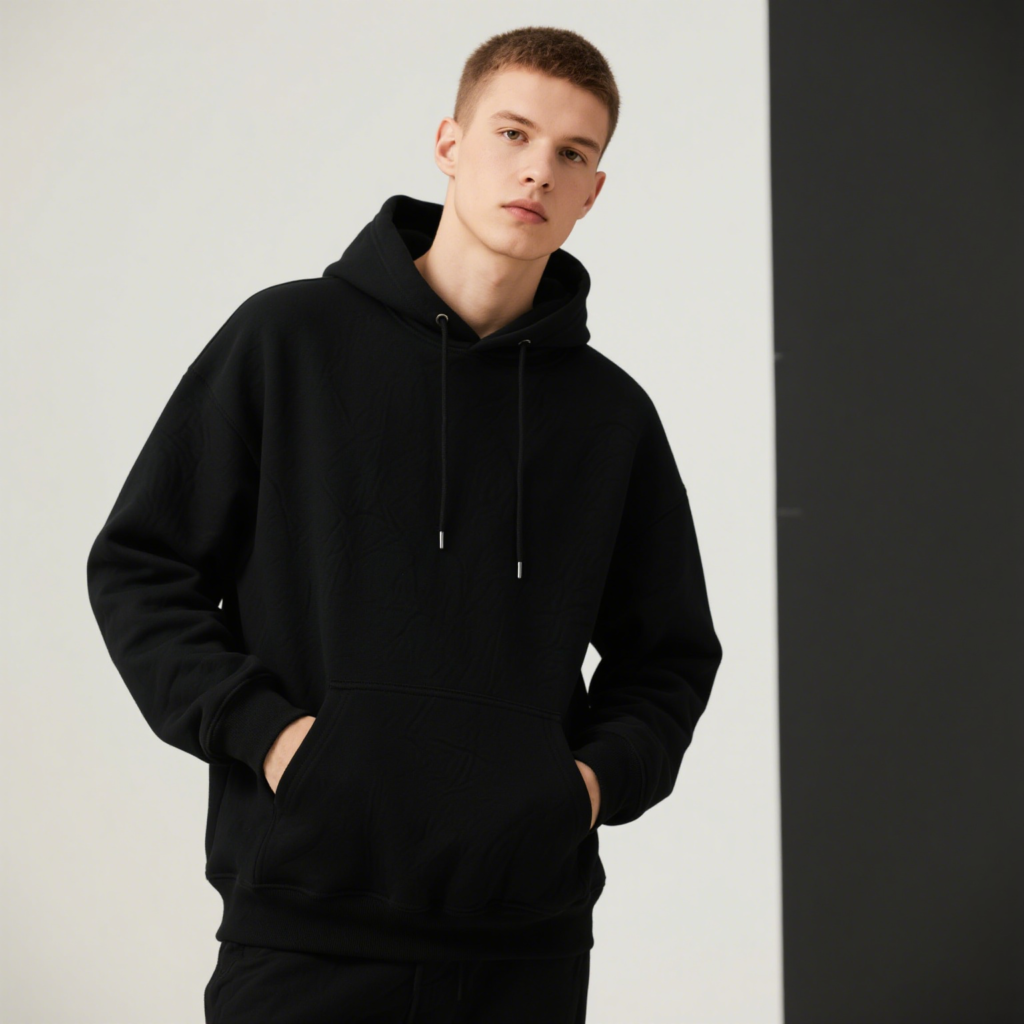
If you’re sourcing winter hoodies right now and want to strike the right balance between warmth, durability, and style—this blog will help you make that decision faster. You’ve probably seen words like cotton-poly blend, performance fleece, or brushed knit on fabric sheets. But do these blends actually offer value? Or are they just extra costs with little impact?
As someone who runs a winterwear hoodie production line at Sheen, I’ve tested more fabric types than I can count. In this post, I’ll break down what blended fabrics can really do for your winter hoodie collection—both in terms of product performance and business outcome. If you’re looking to reduce returns, improve customer retention, or simply offer a hoodie your buyers will reorder next season, this is worth your time.
Why More Buyers Are Asking About Blended Fabrics
In the past two years, we’ve seen a noticeable shift in buyer requests. More than half of the clients who initially ordered 100% cotton or pure fleece hoodies now ask about cotton-poly blends or double-layer fleece.
Why? Because the market is getting smarter. Customers are no longer choosing hoodies just based on the logo or color. They want warmth and comfort. They want a hoodie that doesn’t shrink, doesn’t pill, and holds shape even after multiple washes. That’s exactly where blended hoodie fabrics come in.
What Exactly Is a Blended Fabric?
A blended fabric combines two or more fibers—typically cotton and polyester, but sometimes with viscose, rayon, or spandex. The idea is to combine the strengths of each fiber into a single material.
For example:
- Cotton-poly blends give you the softness of cotton and the strength of polyester.
- Fleece blends add warmth without the bulk.
- Tri-blends (cotton/poly/rayon) are often used for athletic or high-end casual hoodies.
At Sheen, we currently work with:
- 65% cotton / 35% polyester fleece (brushed or loopback)
- 80% cotton / 20% recycled poly with pre-shrink treatment
- Double-knit blends for luxury and sportswear brands
Each blend has a clear purpose depending on the market and usage scenario.

Performance: What Blends Actually Do Better
When clients ask if blended fabrics are worth the extra 3–5% in cost, I always bring it back to real-world use. Here’s where we’ve seen blended hoodies outperform pure fabrics:
1. Shrinkage Resistance
Pure cotton shrinks. That’s just physics. Even with pre-wash treatments, there’s always a risk. Cotton-poly blends, especially when pre-treated, stay true to size even after 10+ washes.
One of our U.K. retail clients cut their return rate by 30% after switching to a 65/35 cotton-poly blend hoodie.
2. Shape Retention
Polyester helps the hoodie retain its original silhouette—no sagging sleeves or warped hems. That’s critical if you’re selling in premium markets or ecommerce channels where reviews matter.
3. Pill Resistance
Brushed cotton and fleece can pill over time. But blending cotton with polyester greatly reduces pilling, especially around high-friction areas like cuffs or pocket edges.
4. Printing & Decoration Compatibility
Blended fabrics hold up better under heat presses and screen printing. The color stays sharper, and cracking or peeling is much less likely. This is huge for streetwear or branded hoodies.
When Pure Fabrics Still Make Sense
We don’t recommend blends for every scenario. For brands that prioritize organic materials, natural touch, or are targeting eco-conscious buyers, 100% organic cotton still has a place. Some minimalist brands in Scandinavia and Germany, for instance, choose unblended, unbrushed cotton for that raw, artisanal feel.
But in 9 out of 10 winter hoodie projects we support, a cotton-poly blend offers the best combination of durability, comfort, and customer satisfaction.
What Makes Sheen’s Blended Fabrics Different?
Let me be clear: not all blends are created equal. At Sheen, we’ve spent years refining our fabric sources and production standards to make sure our hoodies check the boxes your customers care about.
Here’s what sets our blends apart:
- Pre-shrunk & enzyme-washed: No surprises after washing
- OEKO-TEX® certified yarns: Safe for sensitive skin and children
- Customizable GSM weights: From 280 to 360 gsm, depending on climate and market
- Anti-pilling finishes: Especially important for eCommerce brands with visual reviews
- Print-optimized surface: Smooth handfeel for DTG, DTF, or screen printing
Plus, we offer small batch prototyping for new customers, so you can test fabric blends before placing bulk orders.
How Our Clients Use Blends Strategically
One U.S.-based client launched a hoodie collection in two versions:
- A cotton-poly fleece for their Midwest customers, designed for winter layering.
- A lighter French terry blend (also cotton-poly) for their Southern U.S. buyers.
They used the same fit, same design, just different fabric weights. The result? Faster sell-through and lower warehousing costs. Same story with a Dutch client who used heavier blends for ski-resort shops and lighter blends for citywear.
Blends give you flexibility. And that’s exactly what modern buyers expect.
Actionable Tip: Start With A/B Sampling
If you’re unsure about going all-in on blends, here’s what I’d recommend:
- Ask your supplier (or us at Sheen) to create two samples: one in 100% cotton or fleece, and one in your preferred blend.
- Wash-test them. Print on them. Wear them.
- Share them with 5–10 trusted customers or buyers and collect feedback.
Nine times out of ten, the blend wins. Not just in feel—but in performance, too.
Final Thoughts: Are Blended Hoodie Fabrics Worth It?
Yes—especially if you care about long-term customer satisfaction, fewer complaints, and stronger brand loyalty. For most winter hoodie applications, a high-quality blend simply performs better. And if you’re working with a supplier who knows how to treat, finish, and cut those fabrics properly—like we do at Sheen—there’s little downside.
That said, it’s never a one-size-fits-all solution. That’s why we offer consultation, sampling, and technical guidance for each hoodie project. Whether you’re a boutique brand or a multi-market retailer, we help you choose the right material for your customer, not just your catalog.
What’s Next?
In our next post, we’ll break down How GSM Weight Impacts Hoodie Warmth and Perceived Quality—a topic many buyers overlook but one that can make or break your seasonal launch. If you’ve ever wondered why two hoodies at the same price feel completely different, that post will be for you.
Interested in testing Sheen’s blended fabrics for your winter hoodie line?
Sample orders ship in 7–10 days, bulk and custom hoodie production in as fast as 10–35 days EXW — contact us now to get your quote or request a sample.

